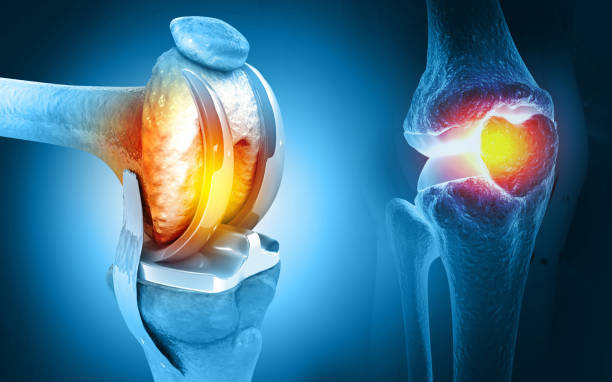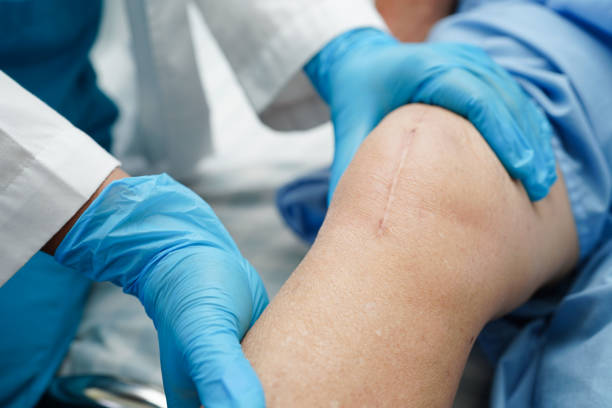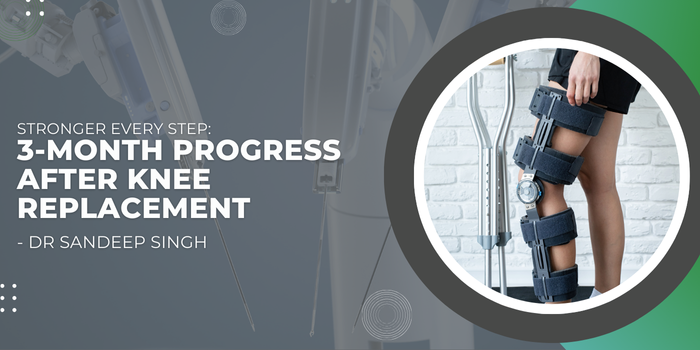
An injured or arthritic knee doesn’t just cause pain—it can slowly take away independence. Simple routines such as walking to the market, climbing a staircase, or even standing for a few minutes become difficult.
According to the World Health Organization (WHO), more than 340 million people worldwide are affected by osteoarthritis, with the knee being one of the most commonly involved joints. In India, estimates suggest that over 15 million people suffer from knee-related osteoarthritis.
Dr. Sandeep Singh, a distinguished Orthopedic Surgeon in Bhubaneswar, explains:
“Knee replacement surgery is not just about replacing a joint—it’s about restoring mobility, independence, and confidence. By 3 months, many notice real improvements, from walking more freely to feeling less dependent on support. However, recovery is a gradual process and requires patience, persistence, and guided rehabilitation.”
Considering whether this surgery might be the right choice for you? Consult an experienced knee specialist who can assess your knee precisely and guide you toward the best path to pain-free movement.
The journey doesn’t end with surgery…what comes next might surprise you.
Mobility and Flexibility at 3 Months after Knee Replacement
At the three-month mark, many patients report noticeable improvements in their mobility and flexibility compared to the early weeks after surgery. By now, most individuals are able to walk without the constant use of walking aids. However, the extent of progress may vary depending on age, overall health, and adherence to physiotherapy.

At the three-month mark, many patients report noticeable improvements in their mobility and flexibility compared to the early weeks after surgery. By now, most individuals are able to walk without the constant use of walking aids. However, the extent of progress may vary depending on age, overall health, and adherence to physiotherapy.
Here’s what you can expect:
Improved range of motion: Patients typically achieve 100–120 degrees of knee bending, which is sufficient for daily activities like sitting in a chair or climbing stairs.
Reduced stiffness: With regular stretching and strengthening exercises, stiffness decreases, allowing smoother movement.
Greater endurance: The ability to walk longer distances improves, though some may still experience fatigue with extended activity.
Confidence in movement: Balance and coordination gradually return, giving patients the confidence to perform basic tasks independently.
Dr. Sandeep Singh, a pioneering Orthopedic Doctor in Bhubaneswar, notes:
“The key milestone at 3 months is functional independence. Patients should feel more confident in their knee, whether walking, bending, or even climbing stairs. However, it is important not to push beyond safe limits, as the joint is still healing internally.”
Experiencing tightness or swelling after surgery? Consult an Orthopedic Specialist to get tailored guidance for your recovery journey.
Curious about whether swelling should still be present at this stage? Let’s break it down.
Swelling and Tightness in Recovery at 3 Months Post-Surgery
By the three-month mark, most of the swelling and bruising from surgery has usually faded. Still, it’s not uncommon for patients to notice a bit of tightness or mild swelling around the knee, especially after long walks or periods of activity. This is generally nothing to worry about—it’s simply part of the body’s healing process.

Factors influencing swelling at this stage include:
Tissue healing: Internal tissues continue to recover, and the body’s natural repair mechanisms may cause minor swelling.
Increased activity: Increased movement can sometimes lead to temporary puffiness in the knee.
Circulation changes: Sitting or standing for too long can also make the knee feel swollen.
Dr. Sandeep Singh, a renowned Orthopedic Surgeon in Bhubaneswar, shares:
“A little swelling or tightness at this stage is completely expected. Many patients become concerned, but in truth, it reflects the body’s adjustment to the new joint. The focus should be on controlling it through the right methods—such as elevation, ice therapy, and regular prescribed exercises—rather than expecting it to disappear entirely at three months.”
Now that swelling is better understood, let’s learn how exercises can shape recovery.
Recommended Exercises at 3 Months after Knee Replacement
At this stage, exercise is crucial in strengthening the knee, improving flexibility, and preventing stiffness. Gentle but consistent activity ensures long-term success of the surgery:
- Daily walking builds stamina and maintains joint mobility
- Stationary cycling helps improve range of motion while strengthening leg muscles without strain
- Straight leg raises strengthens thigh muscles, reducing pressure on the knee joint
- Heel slides enhance knee flexibility and bending capacity
- Step-ups gradually improve balance and prepare the knee for stair climbing
Orthopedic expert Dr. Singh adds:
“I advise m patients to avoid high-impact activities such as running or jumping. Swimming and water-based exercises may also be beneficial as they reduce stress on the joint.”
So, when can life feel “normal” again…? Let’s find out!
Resuming Daily Activities 3 months after Knee Replacement Surgery
For many, 3 months is the turning point where normalcy begins to return. By now, patients typically resume light household chores, short outings, and some forms of work depending on their job demands.
Common activities patients can resume include:
• Household tasks like cooking, light cleaning, and gardening become manageable.
• Most patients with adequate strength and reflexes can resume driving safely.
• People with desk jobs can usually return fully, while physically demanding jobs may require extended recovery.
• Attending gatherings, walking in parks, or traveling short distances becomes more feasible.
Dr. Sandeep Singh, an experienced Orthopedic Doctor in Bhubaneswar, remarks:
“At 3 months, patients often feel they’ve regained a sense of independence. Yet, it’s important to balance enthusiasm with caution. Avoiding activities that overstrain the joint ensures lasting results from the surgery.”
Wondering if it’s safe to resume your routine activities after surgery? Seek professional medical advice to plan your next steps with confidence.
Looking back at the journey, what lessons can we take forward?
Conclusion
3 months post knee replacement is a milestone where patients notice significant improvements in flexibility, mobility, and independence. While mild swelling or tightness may persist, it is generally manageable with the right approach. Exercises play a vital role, and most daily activities can be safely resumed by this point. However, recovery is highly individual, and following professional advice ensures a smoother journey.
Staying consistent with physiotherapy, maintaining realistic expectations, and taking one step at a time are crucial for achieving lasting results.
Before you go, let’s address some common queries people often have…
Frequently Asked Questions
Is it still normal to feel some pain three months after knee replacement?
Yes, a bit of soreness can linger even at this stage, especially after walking longer distances or doing physical activities. The muscles, ligaments, and tissues around the new joint are still adjusting, so occasional discomfort is expected.
Can patients usually kneel by the three-month mark?
Kneeling is often tricky during the first few months. Many people still find it uncomfortable at three months, and it may take more time before it feels easier. For some, it can take several months before kneeling feels natural again.
Should I continue using a walking stick at this point?
By now, a good number of patients walk without any support. However, a stick can still be useful for balance or extra confidence, particularly when moving outdoors or on uneven ground. It really depends on individual recovery speed.
Is long-distance travel safe three months after surgery?
Short journeys are generally fine, but for longer trips, it’s best to be cautious. Taking breaks, stretching the legs, and moving around every hour or two helps prevent stiffness and swelling.
How valuable is physiotherapy 3 months post-surgery?
Physiotherapy remains extremely important at this stage. Continued exercises improve flexibility, rebuild strength, and support long-term success of the new joint. Stopping too early can slow down progress.
References:
https://www.mayoclinic.org/tests-procedures/knee-replacement/about/pac-20385276
https://orthoinfo.aaos.org/en/treatment/total-knee-replacement/
Disclaimer: The information shared in this content is for educational purposes only and not for promotional use.

